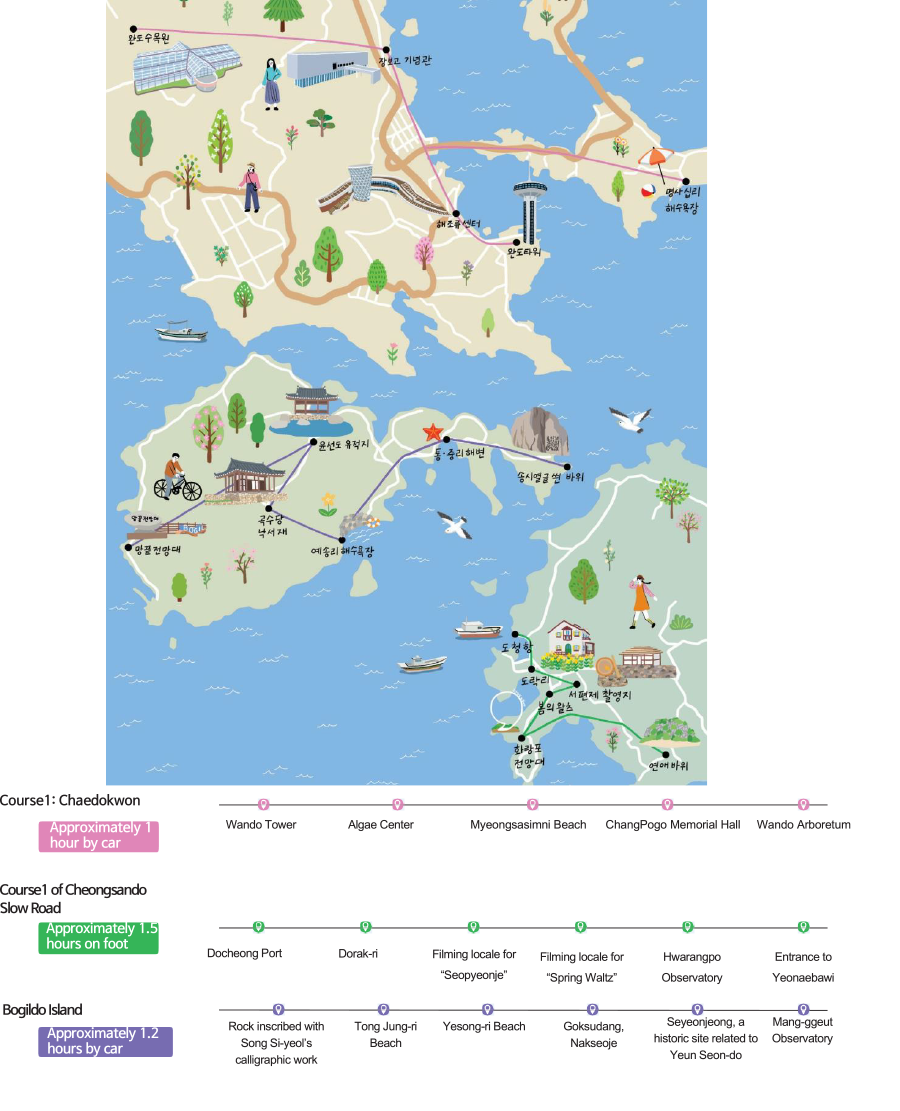
- Water, Nature and Humankind
- Travel for Save the Earth
-
Everything that
belongs here is beautiful!
The first slow city in
Asia, Cheongsando Island- Written and photographed by. Lee Si-mok(travel writer)
- Wando Island has special charms for each season. I visit the island once a year, and already have all sorts of “reasons” to go to Wando Island including the crystal-clear waters and long-stretches of white sand beaches luring me, and mesmerizing sounds of waves. This trip is intended to discover the scenic views unique to Cheongsando Island Island. Cheongsando Island, the first slow city designated in Asia, is packed with features that show how nature and people can peacefully coexist, including grass tombs, gudeuljang rice paddies, darangnon rice paddies, and stone walls, which evoke warm-hearted feelings inside. Taking a leisurely stroll against the antique and eye-catching landscape of Cheongsando Island sounds like a good plan, doesn’t it?
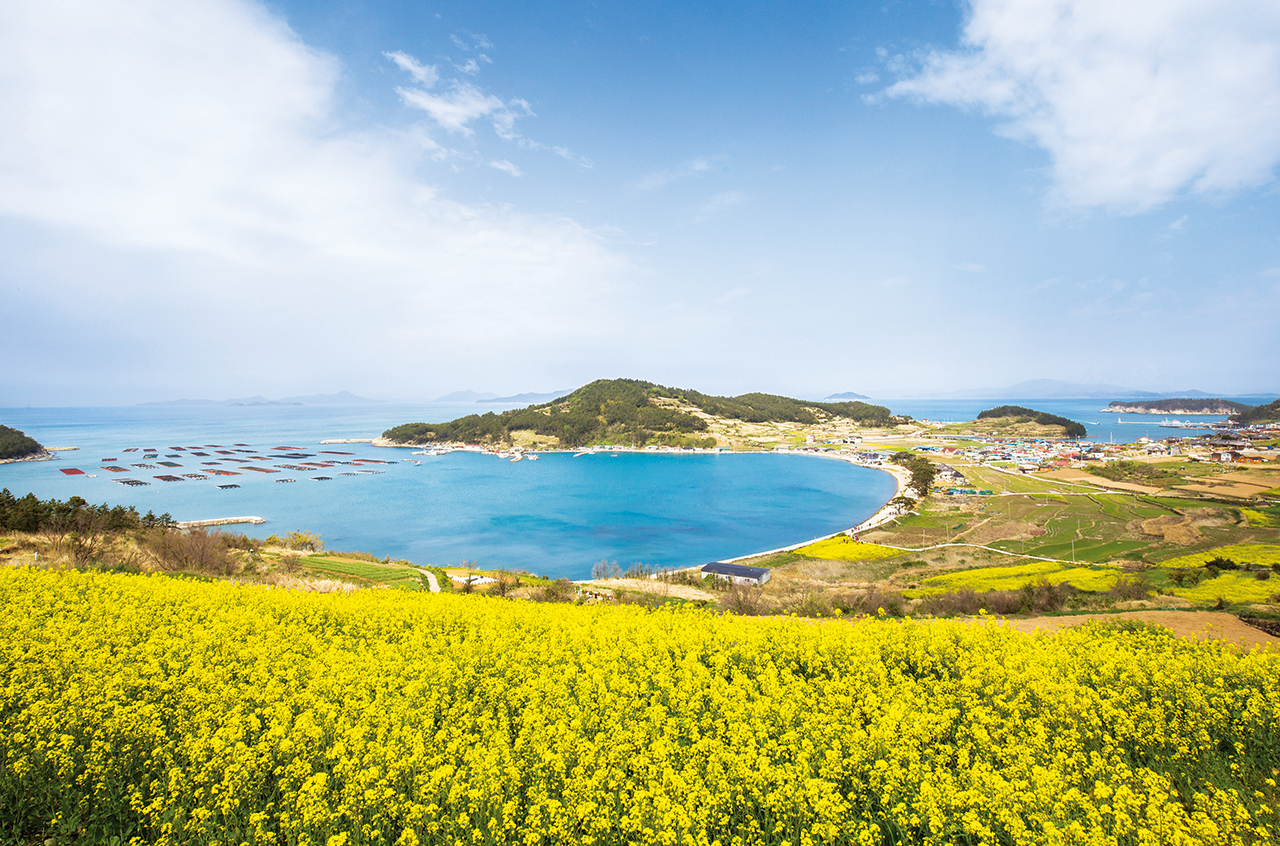
Traces of people engraved in nature heal people
“There’s nothing grandiose, trendy, or lavish on Cheongsando Island Island. But there are things you can find only on Cheongsando Island.” Cheongsando Island Island was designated as one of the first slow cities in Asia in 2007 together with Changpyeong in Damyang, Yuchi in Jangheung and Jeungdo Island in Shinan. One of the factors that made the designation possible was “things that you can find only on Cheongsando Island” as a local phrased it. The things unique to the island had been well-preserved and the island was re-designated as a slow city in 2018. Cheongsando Island hosts the Slow Walking Festival every year and is now widely known as the representative slow island in Korea.
Cittaslow International cited its beautiful landscape, traditional lifestyle, and the culture of Cheongsando Island Island as reasons for its designation as a slow city in 2007. “Things you can find only on Cheongsando Island” include chobeun, a type of tomb unique to the islands on the southern coast, and gudeuljang rice paddies, which are genetically modified rice paddies from nature to increase rice production in areas with poor soil conditions. They are either local customs that have been passed down through generations or heritage of ancestors engraved on the vast canvas of Mother Nature. The designation was also attributed to an abundance of natural crops and marine life including garlic, abalones and seaweeds.
“Slow” basically refers to speed. However, the idea of a slow city goes beyond simply living life at a slow pace. The purpose of a slow city is ensuring that nature, people, and the environment exist in harmony and balance.
To this end, Cheongsando Island is opening a new chapter of its history as a slow city after ten years of its national designation, driven by a new signature byword in addition to “slow and coexistence.” The new signature byword is “heal.” Life on the island has been progressing at the pace of nature, minimizing any damage to nature. As a result, the island boasts a pollution-free, pristine natural environment. You can see the Milky Way shining brightly in the crystal-clear night sky from Beombaiwi Rock and hear the croaks of frogs on the hills in Dang-ri. All these nostalgic sights and sounds bring peace of mind and renewal to visitors.
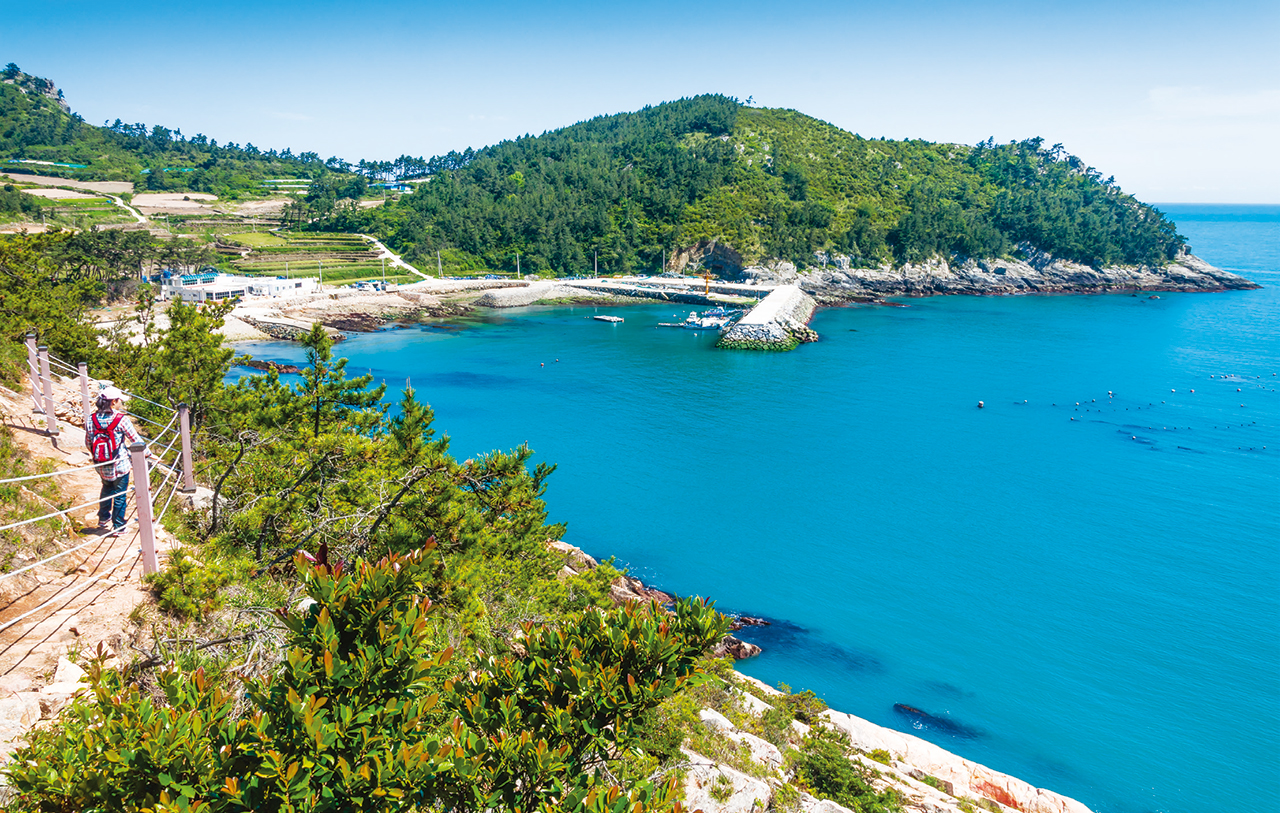 1. Travelers walking on Course4. You can discover the hidden beauty of Cheongsando Island as you walk along the course.
1. Travelers walking on Course4. You can discover the hidden beauty of Cheongsando Island as you walk along the course.
Walk on the Slow Trail: the slower the pace is, the more relaxing you feel.
The 42.195km walking trail that stretches around the island takes about 14 hours to fully complete. The path was designated as Slow Road No.1 in 2011 and is named so because your footsteps naturally slowdown from the beautiful landscape as you walk along the path. The path consists of 17trails including Seopyeonje-gil, Nang-gil and Beaombawi-gil. The 17trails vary in length and comprise 11courses with distinct features to choose from to suit personal taste. It takes 3-4days to walk on the entire road, but you don’t have to stay on the Slow Road. You can take whatever trail that your heart desires to follow and take a rest along the way as needed. During the hot summer, you can walk on some parts of the road while you can take a bus to visit major points of attraction. Some of the most popular courses are Course1 with a lot of small but eye-pleasing sights, Course4 where you can view rock cliffs on the island, and Course5 that runs via Bemba leading to the observatory.
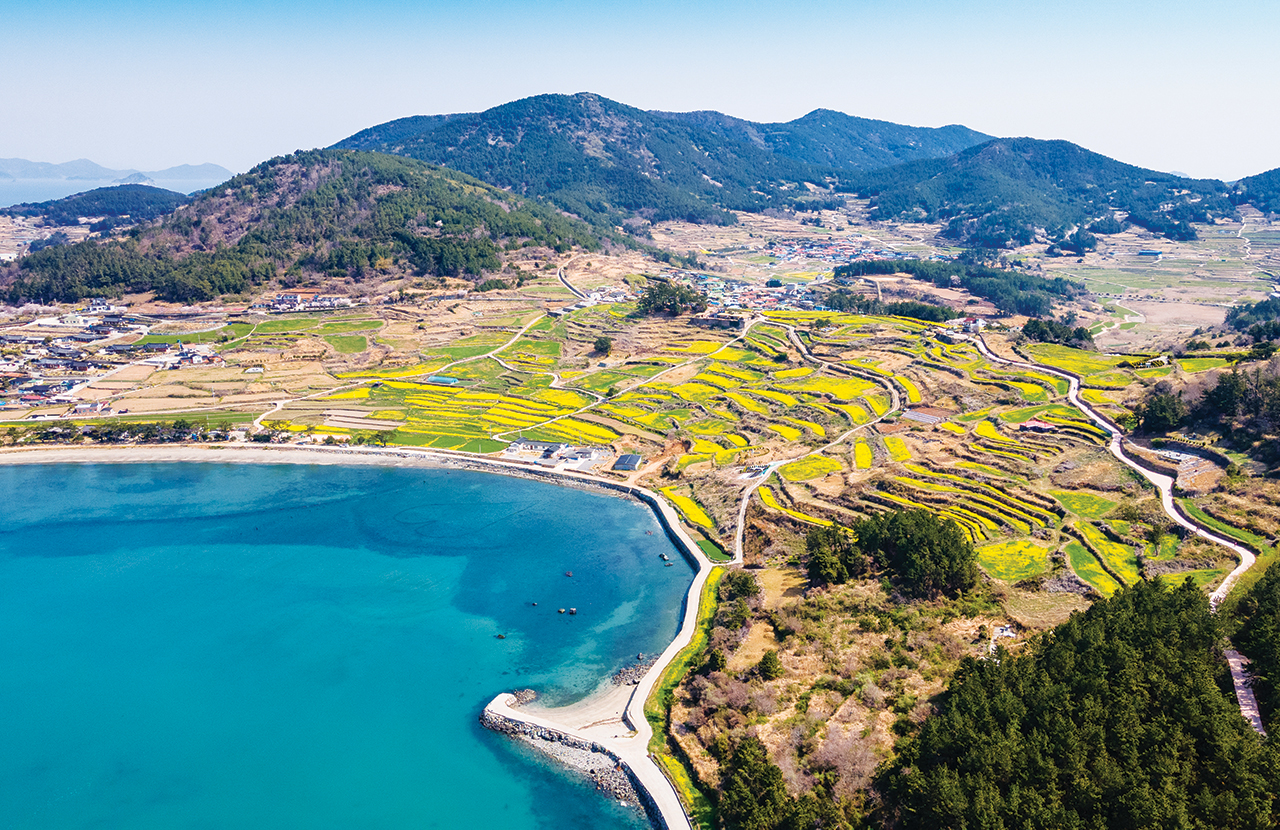 2. Darangno rice paddies stack up like stairs against the backdrop of crystal blue waters of the sea. Bright yellow rape flowers bloom in spring while cosmos flowers blossom in various colors in fall.
2. Darangno rice paddies stack up like stairs against the backdrop of crystal blue waters of the sea. Bright yellow rape flowers bloom in spring while cosmos flowers blossom in various colors in fall.
All trails run through mountains, seas, and fields that eventually lead to villages
If you want to see a landscape the blends nature and humanities, choose Course1 (i.e. grass tombs & poisoning), Course6 (i.e. gudeuljang rice paddies & darang rice paddies), and Course7 (i.e. stone walls). Course1 that connects Mihang-gil, Donggujeong-gil, Seopyeonje-gil, and Hwarangpo-gil has scenic views that unfold with a slow flow of time, as if Mother Nature opens presents after presents for you. The sets for the culturally iconic movie Seopyeonje and the TV drama Spring Waltz are located across each other, and the short wall marking the borders of the fields stands between the two sets. Near the shore at the bottom of the hill is a grass tomb recreated for sightseeing. The grass tomb emanating the heavy scent of dry grass represents the essence of the landscape of a slow city. When a person had died and his or her family was all out at sea for fishing, other members of the community made a grass tomb in lieu of a full-fledged funeral ceremony by placing the coffin on the ground and covering it with a thatch made of straw or grass. When the body had completely decomposed three to five years later, the family would pick a day and bury the remains properly in an underground tomb. It is a type of aerial burial. As you walk around the island, you will likely find a grass tomb on a winding road leading to the entrance to a village. Then perhaps you may want to stop for a while, sit down beside the grass tomb, and feel the time of the wind gently caressing the grass on the tomb.
Course6 allows you to view gudeuljang rice paddies or fields that are stacked on top of each other, creating a scene of multiple fields undulating like waves. To make gudeuljang rice paddies, a bed of rocks is laid like gudeul built for an ondol, a traditional Korean floor heating system, and a layer of soil is placed on top of the rock bed. The soil layer holds enough water volume for farming and any excess water is drained through the rocks, trickling down to the lower fields. These rice paddies were invented to overcome the challenging geographical features of Cheongsando Island where rocky soil cannot hold enough water for rice farming. The ingenious invention offers a glimpse of how hard daily life on the island must have been and how desperately local residents depended on a strip of scarce farming field.
The highlight of Course7 is the stone walls in Sanseo-ri, which is known for the field-demarcating stone walls and house walls that are particularly long, tall, and winding. Designated as a registered cultural heritage in 2006, these stone walls traverse the island like a maze. For a precious time, you might as well forget about your hectic urban life and take a leisurely stroll, just being immersed in the healing sights and sounds.
 3. From a viewpoint of Dang-ri hill overlooking Dang-ri village, you can see the roofs in different colors beyond the garlic field.
3. From a viewpoint of Dang-ri hill overlooking Dang-ri village, you can see the roofs in different colors beyond the garlic field.
- How to make the most out of a tour around the slow city
- Four pledges to preserve Cheongsando Island as it is
-

-
Here’s how you can make your trip to Wando Island more meaningful
_ Marine healing programs
The new and emerging byword associated with Wando Island is “marine healing.” “Marine healing” refers to responsibly getting immersed Wando Island’s pristine marine environment, climate, and marine life to heal the body and mind. The Wando Island County municipality is running various healing programs including the Marine Climate Healing Center at Myeongsasimni Beach, Yaksan Marine Healing Forest on Yaksando Island, seaside nordic walking, seaside yoga and pilates, seawater spas, and seawater healing programs. Currently under construction on Cheonsando are marine healing experience facilities that use the sights, sounds, and scents of nature as well as marine algae. For more information including individual programs and timetables, please visit the Marine Healing Center website at https://www.wando.go.kr/chiu4u
Tel No.: 061-550-5578 (Marine Healing Center),
061-550-5509 (Yaksan Marine Healing Forest)
 Wando Island’s Top Attractions
Wando Island’s Top Attractions

-
Wando Island and the archipelago at a glance
Wando Tower
Wando Tower has become an iconic landmark of Wando since its opening in 2009. You can get a bird’s eye view of the beautiful archipelago from the top of the tower rising 76m, which measures 17-stories high. You can see as far as Jeju Island from the tower on a sunny day, making the tower a major attraction, constantly drawing an increasing number of tourists. Illuminated with lights, the tower looks even more beautiful at night, and the laser show shot from the tower creates quite a scene on Fridays and Saturdays. The monorail that climbs to the tower from Wando Port is a must-to-do. The tower makes for an ideal spot to view the sunrise and sunset.
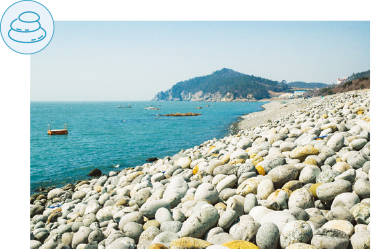
-
The place that pleasing your ears
Gugaedeung
Designated as Scenic Sport No.3 in 1972, Gugaedeung is a beach with nine layers of mongdol, pebbles eroded and smoothed by waves over time, stretching along the coast that is shaped like a bow. The secluded beach is far less crowded with people than other well-known beaches, making it a perfect place to focus on the sounds, feel, and scents of nature. The sound of waves striking the mongdol on the beach is particularly fascinating. You can hear the unique sound created together by waves slapping the pebbles whenever waves come and go. Jeongdo-ri Nature-Observation Trail (Bangpungrim) behind the pebble field is a great place for taking a short walk.
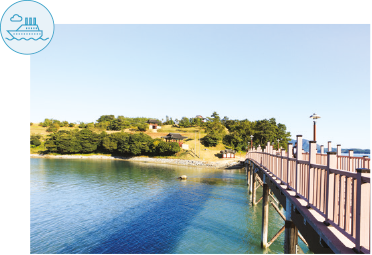
-
General Chang Po-go comes back to life in the Sea of Wando Island
Jangdo Island
Located at the eastern tip of Wando Island, Jangdo Island is where the military headquarters of Cheonghaejin was set up. The exterior and interior gates were reconstructed at different spots in the earthen fortress that stretches along the perimeter of the island. The reconstruction of the gates was strictly based on the historical research. Remnants of a seaport, wooden fences and other historical sites are found across the island. You can reach the island using a wooden bridge from the mainland on foot and take a walk along the perimeter of the island. ChangPogo Memorial Hall and his statue located near Jangdo Island are also well-worth a visit. “Haeshin”, meaning the god of the sea, a TV drama about General Jang was filmed at Cheonghae Port, which served as a filming locale in Daeshin-ri.
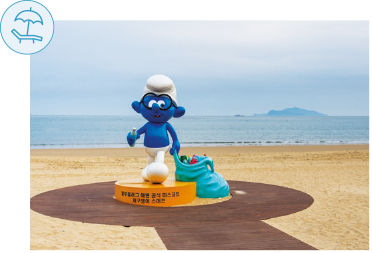
-
‘Blug Flag” certification
Myeongsasimni Beach
Myeongsansimni is a 3.8km-long beach of fine sand. The beach is crowded with visitors from around the country year-round due to the mineral-rich waters that have various health benefits. The beach has received a Blue Flag certification for the last three consecutive years. Blue Flag is an international certification awarded to eco-friendly, safe beaches. The Foundation of Environmental Education of Denmark grants a Blue Flag certification to beaches that meet all of the 137requirements of 29criteria relating to water quality, information provision, environmental education, and safety & environmental management.
 List of Tasty Eateries in Wando Island
List of Tasty Eateries in Wando Island
-
-
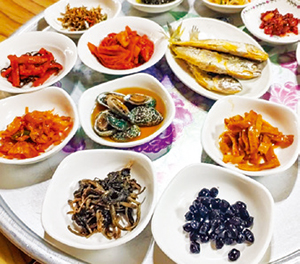
-
Seommaeul
Located in Docheong Port, Cheongsando Island, the restaurant is well known for baekban, a set of home-cooked style meal including rice, soups and side dishes. The meal features grilled yellow corbinas and ten different side dishes, and the highlight of the meal is jeonbokjang, abalones marinated in soy sauce. Bite-size abalones are so appetizing and make you want to wolf down a bowl of rice in no time. The restaurant serves breakfast as well.
-
-
-

-
Binggrae
Binggrae, once voted as the best restaurant on Wando Island serves a course menu featuring grilled fish as its signature dish. The variety of fish served varies from season to season. They serve mainly bass, red sea bream, and croakers in summer and red sea beams, Spanish mackerels, and scorpion fish in winter.
-
-
-
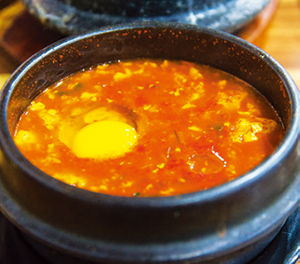
-
Gaeseong Soft Tofu Restaurant
The restaurant serves a set of a hot-stone bowl of rice and soft tofu of different flavors. The most popular dish is the combo soft tofu soup cooked with shrimps, Manila clams and beef. Cooked with fresh ingredients and broth, the soup is spicy and satisfying. The restaurant serves breakfast and a set menu for one.
-
-
-
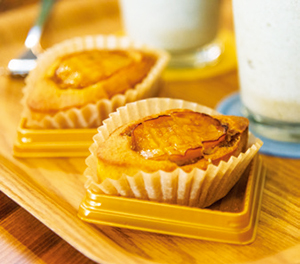
-
Dalsweet
The place sells abalone bread also known as Jangbogo bread made with whole abalones, a local specialty. The dough is made with domestically produced wheat flour, organic sugar, honey, loquat, powdered algae, and powdered abalone intestines, and it is baked with a whole abalone in it. The bread tastes sweet without a hint of fishy flavor.
-
Enjoy Wando Island to the full
Walk on the triple-themed courses that combine the beautiful landscape and culture of Wando Island.
